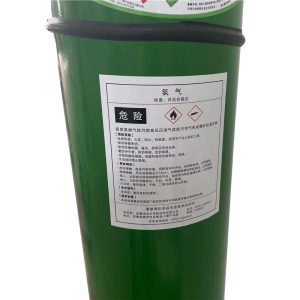Properties and Applications of Argon-Hydrogen Mixtures in Welding
Argon-hydrogen mixtures have gained significant attention in the field of welding due to their unique properties and wide range of applications. This article aims to explore the various properties of argon-hydrogen mixtures and discuss their applications in welding processes. By understanding these properties and applications, welders can optimize their welding procedures and achieve high-quality welds.

1. Properties of Argon-Hydrogen Mixtures:
1.1 Increased Heat Input: Argon-hydrogen mixtures have a higher thermal conductivity compared to pure argon. This results in increased heat input during the welding process, leading to improved penetration and faster welding speeds.
1.2 Enhanced Arc Stability: The addition of hydrogen to argon improves arc stability by reducing the voltage drop across the arc. This allows for better control of the welding process, minimizing spatter and ensuring a stable arc throughout the weld.
1.3 Improved Shielding Gas: Argon-hydrogen mixtures provide excellent shielding properties, preventing atmospheric contamination of the weld pool. The hydrogen content in the mixture acts as a reactive gas, effectively removing oxides and other impurities from the weld zone.
1.4 Reduced Heat Affected Zone (HAZ): The use of argon-hydrogen mixtures results in a narrower and less affected HAZ compared to other shielding gases. This is particularly beneficial for welding materials with high thermal conductivity, as it minimizes distortion and improves overall weld quality.
2. Applications of Argon-Hydrogen Mixtures in Welding:
2.1 Carbon Steel Welding: Argon-hydrogen mixtures are commonly used for carbon steel welding due to their ability to provide deep penetration and high welding speeds. The enhanced arc stability and improved shielding properties make these mixtures ideal for achieving strong and durable welds in carbon steel applications.
2.2 Stainless Steel Welding: Argon-hydrogen mixtures are also suitable for stainless steel welding. The hydrogen content in the mixture helps to remove surface oxides, resulting in cleaner welds with reduced porosity. Additionally, the increased heat input allows for faster welding speeds, improving productivity in stainless steel fabrication.
2.3 Aluminum Welding: Although argon-helium mixtures are typically used for aluminum welding, argon-hydrogen mixtures can also be employed. These mixtures offer better arc stability and improved cleaning action, resulting in high-quality welds with reduced defects.
2.4 Copper Welding: Argon-hydrogen mixtures can be used for copper welding, providing excellent arc stability and improved heat input. The hydrogen content in the mixture helps to remove copper oxides, ensuring clean and strong welds.
Argon-hydrogen mixtures possess unique properties that make them highly suitable for various welding applications. Their increased heat input, enhanced arc stability, improved shielding properties, and reduced HAZ make them an excellent choice for carbon steel, stainless steel, aluminum, and copper welding. By utilizing argon-hydrogen mixtures, welders can achieve high-quality welds with improved productivity and reduced defects. It is crucial for welders to understand the properties and applications of argon-hydrogen mixtures to optimize their welding procedures and ensure successful outcomes in their welding projects.



